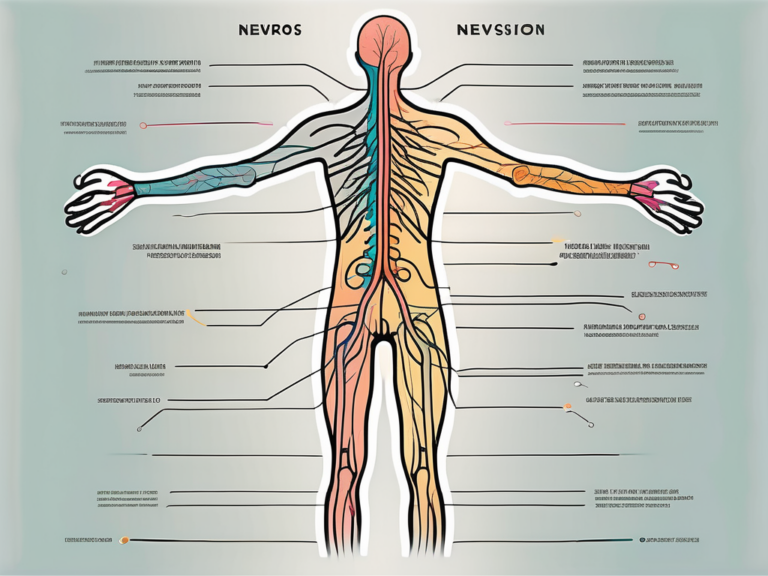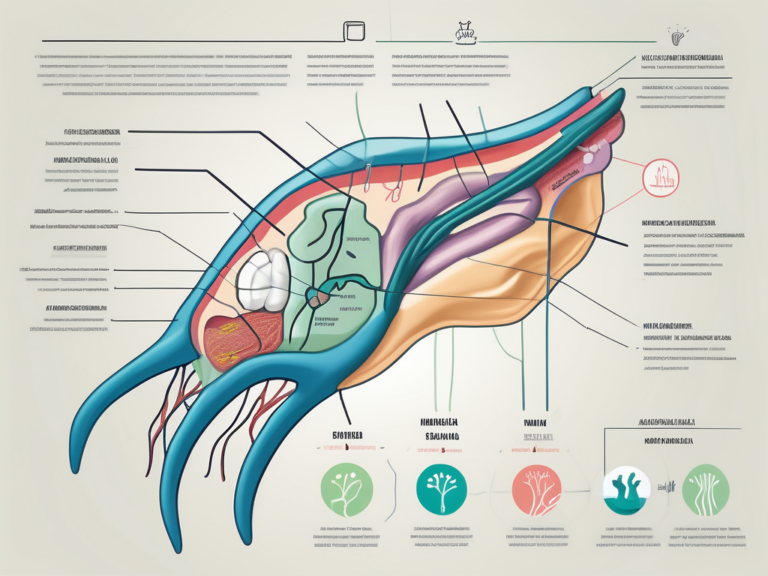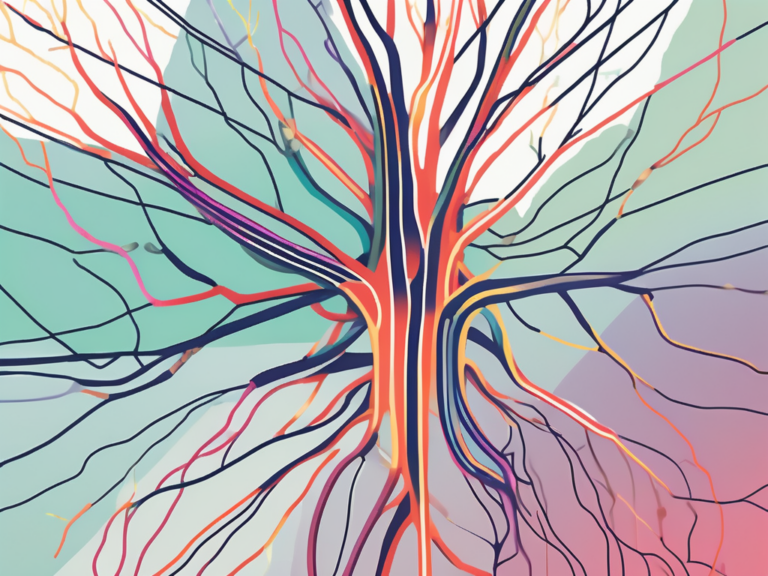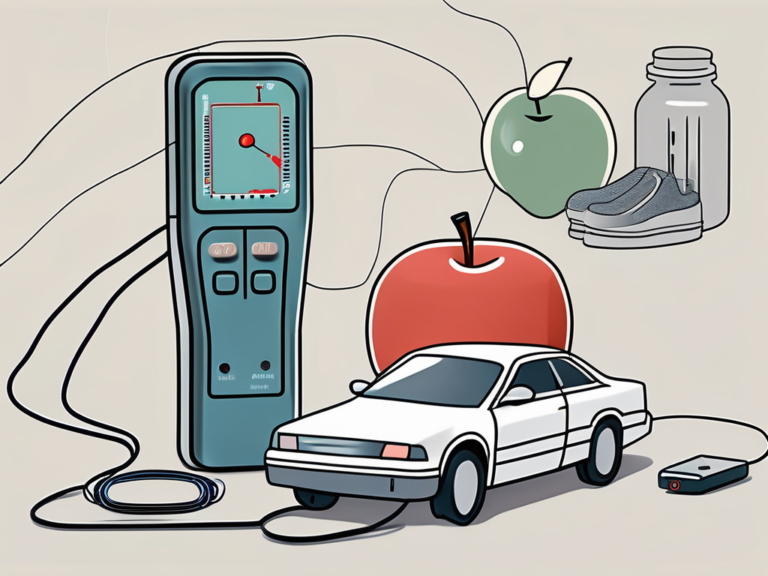Explaining Parasympathetic Nerves to kids
The human body is a truly remarkable creation, filled with complex systems that work together to keep us healthy and functioning. One of the most important systems in our body is the nervous system. The nervous system is like a giant communication network, sending messages back and forth between different parts of our body. But did you know that there are different parts of the nervous system, each with its own unique function? In this article, we will explore the fascinating world of parasympathetic nerves and explain what they do in a way that kids can easily understand.
Understanding the Nervous System
Before we dive into the amazing world of parasympathetic nerves, let’s take a moment to understand what the nervous system is all about. The nervous system is like the control center of our body. It allows us to think, move, feel, and experience the world around us. Think of it as the superhero of our body, always ready to protect and keep us safe.
The nervous system has two main parts: the central nervous system and the peripheral nervous system. The central nervous system includes the brain and the spinal cord, while the peripheral nervous system includes all the nerves that branch out from the central nervous system and reach every part of our body. Parasympathetic nerves are a special part of the peripheral nervous system, and they play a vital role in keeping our bodies working properly.
The Role of the Nervous System
The nervous system is responsible for sending signals and messages throughout our body. It helps us to see, hear, smell, taste, and touch. It also helps us to move our muscles and organs. Without the nervous system, we wouldn’t be able to do any of these things!
But the nervous system does much more than just help us see and move. It is also responsible for keeping our body in balance and maintaining a state of harmony, known as homeostasis. This means that it helps to regulate things like our body temperature, heart rate, and breathing. It’s like having an invisible superhero inside us, always working to keep us healthy and happy!
Different Parts of the Nervous System
Now that we have a basic understanding of the nervous system, let’s explore the different parts that make it up. The nervous system can be divided into two main parts: the central nervous system and the peripheral nervous system.
The central nervous system, consisting of the brain and the spinal cord, is like the command center of our body. It is where all the important decisions are made. The brain, with its billions of neurons, is responsible for processing information, controlling our thoughts and emotions, and coordinating our body’s actions. The spinal cord, on the other hand, acts as a communication highway, relaying messages between the brain and the rest of the body.
The peripheral nervous system, on the other hand, is like the network of roads that connect the different parts of our body. It consists of a vast network of nerves that branch out from the central nervous system and reach every part of our body. These nerves are like the messengers, carrying information to and from the brain. They allow us to feel sensations, move our muscles, and perform countless other tasks.
Introduction to Parasympathetic Nerves
So, what exactly are parasympathetic nerves? Well, they are a special type of nerve that belongs to the peripheral nervous system. They are like the calm and relaxing part of our nervous system, helping to bring our body back to a resting state after we’ve been active.
Parasympathetic nerves are fascinating because they play a crucial role in maintaining the body’s homeostasis, or internal balance. They work in harmony with the sympathetic nerves, which are responsible for the body’s fight-or-flight response. While the sympathetic nerves rev up our body for action, the parasympathetic nerves step in to bring everything back to baseline, ensuring that our body functions optimally.
What are Parasympathetic Nerves?
Parasympathetic nerves are like the good guys in our body. They help our body relax and rest. They are like a big, warm hug for our organs, telling them that everything is okay and it’s time to take a break. They make sure that our body is calm and peaceful, helping us to feel relaxed and ready to take on the day.
These remarkable nerves are part of the autonomic nervous system, which controls involuntary bodily functions such as digestion, heart rate, and respiratory rate. Without the parasympathetic nerves, our body would struggle to return to a state of rest after periods of stress or activity, leading to potential health issues.
The Function of Parasympathetic Nerves
Now that we know what parasympathetic nerves are, let’s explore what they do in more detail. Parasympathetic nerves have many important jobs, but their main function is to conserve energy and keep our body in a restful state.
One of the important ways that parasympathetic nerves do this is by controlling our heart rate. When we are at rest, our heart beats slower and more peacefully, thanks to these special nerves. They also help to slow down our breathing, allowing us to take deep and calming breaths. So, the next time you take a deep breath and feel a sense of relaxation, you can thank your parasympathetic nerves!
Additionally, parasympathetic nerves play a vital role in promoting digestion and nutrient absorption. When we eat, these nerves stimulate the release of digestive enzymes and increase blood flow to the digestive organs, ensuring that we can break down food effectively and extract essential nutrients. This process highlights the intricate connection between our nervous system and digestive system, showcasing the holistic nature of our body’s functions.
The Importance of Parasympathetic Nerves in our Body
Parasympathetic nerves play a vital role in maintaining balance and harmony in our body. Without them, our body would be like a car that’s constantly running at full speed, without ever taking a pit stop to refuel and rest. Let’s take a closer look at how parasympathetic nerves help to keep our body in tip-top shape.
These nerves are part of the autonomic nervous system, which controls involuntary bodily functions such as heart rate, digestion, and respiratory rate. The parasympathetic nervous system acts as the counterpart to the sympathetic nervous system, which is responsible for the body’s fight-or-flight response. While the sympathetic system gears us up for action, the parasympathetic system helps us calm down and rest.
Parasympathetic Nerves and Resting State
Have you ever wondered what happens to your body when you sleep? Well, parasympathetic nerves are the ones responsible for helping our body relax and recharge during sleep. They ensure that our body is in a restful state, allowing us to wake up feeling refreshed and ready to tackle the day ahead.
During sleep, parasympathetic activity increases, promoting relaxation and restoration. This is the time when our body repairs tissues, consolidates memories, and regulates hormones. Without the calming influence of the parasympathetic nerves, our sleep quality would be compromised, leading to fatigue and decreased cognitive function.
Parasympathetic Nerves and Digestion
Another important job of parasympathetic nerves is to help with digestion. When we eat, parasympathetic nerves kick into action, sending signals to our digestive system to start breaking down the food we eat. They help our body absorb all the important nutrients from our food and ensure that our digestive system functions properly.
Additionally, parasympathetic stimulation increases blood flow to the digestive organs, promoting optimal nutrient absorption and gut health. This process also includes the release of digestive enzymes and the contraction of smooth muscles in the gastrointestinal tract, facilitating the movement of food along the digestive system. Without the parasympathetic nerves, our digestion would be compromised, leading to issues such as bloating, indigestion, and nutrient deficiencies.
Parasympathetic Nerves vs Sympathetic Nerves
Now that we understand what parasympathetic nerves do, let’s compare them to another type of nerve called sympathetic nerves. While parasympathetic nerves are like the calm and relaxing part of our nervous system, sympathetic nerves are like the active and energizing part. Think of them as two sides of the same coin.
Parasympathetic nerves are responsible for activities that occur when the body is at rest. These nerves help with digestion, lowering heart rate, and promoting relaxation. On the other hand, sympathetic nerves are involved in the body’s fight-or-flight response. When we encounter a stressful situation, sympathetic nerves kick in to increase heart rate, dilate pupils, and redirect blood flow to muscles to prepare us for action.
The Differences
The main difference between parasympathetic nerves and sympathetic nerves is the way they affect our body. Parasympathetic nerves slow things down and help us relax, while sympathetic nerves speed things up and help us get ready for action. It’s like having a gas pedal and a brake pedal in our body, allowing us to go fast or slow down, depending on what we need.
Another key difference is the neurotransmitters involved. Parasympathetic nerves release acetylcholine, which promotes relaxation and restful activities. In contrast, sympathetic nerves release norepinephrine, which triggers the body’s response to stress and danger.
The Similarities
While parasympathetic nerves and sympathetic nerves have different functions, they also work together to keep our body in balance. It’s like having a perfectly choreographed dance, with each nerve knowing when it’s time to step in and do its part. They both play a crucial role in maintaining our overall well-being and ensuring that our body functions properly.
Furthermore, both parasympathetic and sympathetic nerves are part of the autonomic nervous system, which controls involuntary bodily functions such as heart rate, digestion, and respiratory rate. This intricate system ensures that our body can adapt to various situations and maintain homeostasis, or internal balance, in response to external stimuli.
Fun Facts about Parasympathetic Nerves
Now that we’ve learned about parasympathetic nerves, let’s dive into some fun and interesting facts that will make you appreciate these amazing nerves even more!
Parasympathetic nerves, often referred to as the “rest and digest” system, are truly fascinating in the way they influence our daily lives. These nerves play a vital role in our body’s ability to unwind and rejuvenate, allowing us to relax and recharge after a long day.
Interesting Things to Know
– Did you know that parasympathetic nerves are the reason why we feel sleepy after a big meal? They help our body relax and digest the food we’ve eaten, making us feel a little extra cozy and ready for a nap.
– Parasympathetic nerves love to take their time. Unlike sympathetic nerves, which work quickly and get things done in a hurry, parasympathetic nerves like to slow things down and savor the moment. They remind us to take a break, enjoy the little things, and find joy in the present moment.
Furthermore, parasympathetic nerves are responsible for stimulating activities such as salivation, lacrimation (tear production), urination, digestion, and sexual arousal. These intricate processes showcase the diverse functions of parasympathetic nerves beyond just relaxation.
Parasympathetic Nerves in the Animal Kingdom
Parasympathetic nerves don’t just exist in humans, they are found in many animals too! From cuddly dogs to graceful dolphins, parasympathetic nerves play a crucial role in helping animals relax and rest. So, the next time you see an animal taking a nap, you can thank their parasympathetic nerves for helping them unwind and recharge.
It’s truly remarkable to witness how parasympathetic nerves are universal among various species, emphasizing their importance in maintaining balance and well-being in the animal kingdom.
Simplifying Parasympathetic Nerves for Kids
Now that we’ve explored the wonderful world of parasympathetic nerves, let’s find some fun and engaging ways to understand these amazing nerves even better!
Easy Explanations
Explaining complex concepts to kids can be challenging, but with the right approach, it can also be a lot of fun. One way to explain parasympathetic nerves is to use everyday examples that kids can relate to. For example, you can compare parasympathetic nerves to a cozy blanket that wraps around our body, making us feel safe and comfortable. Just like a blanket provides warmth and security, parasympathetic nerves help us relax and unwind.
Or, you can use the analogy of a gentle lullaby that helps us drift off to sleep and have sweet dreams. Just like a lullaby soothes us and puts us at ease, parasympathetic nerves have a calming effect on our body and mind.
Another fun way to explain parasympathetic nerves is to get creative with art and crafts. Kids can draw pictures or create collages that represent the relaxing and soothing effects of parasympathetic nerves. They can use calming colors like blue and green to create their masterpiece and display it proudly. This not only enhances their understanding of parasympathetic nerves but also allows them to express their creativity.
Engaging Activities to Understand Parasympathetic Nerves
Learning about parasympathetic nerves doesn’t have to be limited to reading and listening. There are many hands-on activities that can help kids understand these nerves in a more engaging way.
One activity you can try is a guided relaxation exercise. Find a quiet and comfortable space, have kids close their eyes, and guide them through deep breathing exercises. Talk about how taking slow and deep breaths can activate their parasympathetic nerves and help them feel calm and relaxed. Encourage them to imagine a peaceful scene, like lying on a soft cloud or floating in a calm ocean, to enhance the relaxation experience.
You can also play a game of “Simon Says” with a twist. Instead of focusing on fast and active movements, encourage kids to do slow and gentle movements that activate their parasympathetic nerves. For example, you can say, “Simon says stretch your body like a sleepy cat” or “Simon says breathe in slowly and breathe out even slower.” This game not only promotes physical movement but also helps kids connect those movements with the calming effects of their parasympathetic nerves.
By using these easy explanations and engaging activities, kids can develop a deeper understanding of parasympathetic nerves and how they contribute to our overall well-being. So, let’s dive into the fascinating world of parasympathetic nerves and explore the wonders they hold!
Conclusion: The Wonders of Parasympathetic Nerves
In conclusion, parasympathetic nerves are a fascinating part of our nervous system. They help us relax, rest, and keep our body in balance. Whether we’re sleeping, eating, or just enjoying a quiet moment, parasympathetic nerves are always working behind the scenes to make sure everything is running smoothly.
Recap of Parasympathetic Nerves
– Parasympathetic nerves are a type of nerve in the peripheral nervous system.
– They help our body relax, rest, and bring us back to a resting state.
– They control our heart rate and breathing, among many other functions.
Encouraging Further Exploration in Neuroscience
Learning about parasympathetic nerves is just the beginning of a fascinating journey into the world of neuroscience. Encourage kids to explore more about the nervous system and how it impacts our daily lives. They can read books, watch educational videos, or even visit a museum or science center to learn more about the wonders of the human body and the incredible role that parasympathetic nerves play in keeping us healthy and happy.
So, next time you feel relaxed and at ease, remember to thank your parasympathetic nerves for their important role in your well-being. Take a deep breath, embrace the calm, and let these amazing nerves continue to do their magic!






